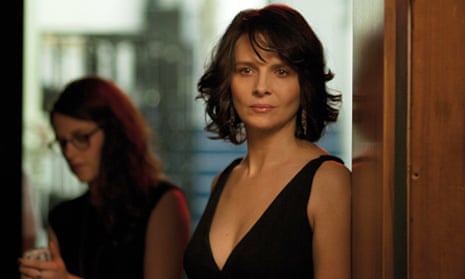Juliette Binoche is at the peak of her powers in an autobiographically inflected role created for her by Olivier Assayas, co-writer of Rendez-vous, which helped kick-start her screen career in the mid-80s. Binoche plays Maria Enders, a middle-aged actress revisiting the iconic play in which she once embodied Sigrid, a young woman who seduces and then destroys her boss, Helena. Now, she is being asked to play the older role, with Lindsay Lohan-esque rising star – and celebrity clickbait – Jo-Ann Ellis (Chloë Grace Moretz) stepping into Sigrid’s shoes. Holed up in recently deceased playwright Wilhelm Melchior’s Alpine home, Maria and her young assistant, Valentine (Kristen Stewart, terrific), undertake line readings of the play, Maloja Snake. The distinction between what is read and what is real fades ever further as the play reflects and refracts their own interpersonal lives.
Interspersing brooding extracts from Arnold Fanck’s 1924 documentary Das Wolkenphänomen von Maloja, and nodding towards Bergman’s Persona and Fassbinder’s The Bitter Tears of Petra von Kant, Assayas establishes a complex emotional weather system in which age and identity ebb and flow as mysteriously as the titular clouds that snake through the Engadin valley. Although the discussions of the acting process suffer from a surfeit of theatricality, there’s nothing artificial about the sparks that fly between Binoche and Stewart. The breathtaking scenery (amid which Nietzsche wrote that “everything returns”) lends an otherworldly air, but the push-and-pull between Maria and Valentine is intimate and domestic, mirror-image themes emphasised without overstatement.
Assayas is less sure how to handle Jo-Ann – the clips of her latest sci-fi blockbuster look more like archaic outtakes from Battlestar Galactica, and her viral internet presence is depicted with what is clearly an outsider’s eye. Yet Moretz has the measure of the role and fills in the blanks with subtlety and wit, leaving Stewart and Binoche to work their career-best magic.

Comments (…)
Sign in or create your Guardian account to join the discussion